Folded 1984 Conference Western Founded 1983 | League USFL Division Central Division | |
Team colors Red, Blue, Silver, White | ||
The Chicago Blitz was a professional American football team that played in the United States Football League in the mid-1980s. They played at Soldier Field in Chicago, Illinois.
Contents
- York capitals vs chicago blitz aif championship game
- Team history
- George Allen
- 1983 season
- Struggling at the gate
- Franchise swap with Arizona Wranglers
- The Hoffman Era
- An even weaker Blitz team
- The 1984 Season
- Shutting down
- Players who went on to the National Football League
- Single season leaders
- References
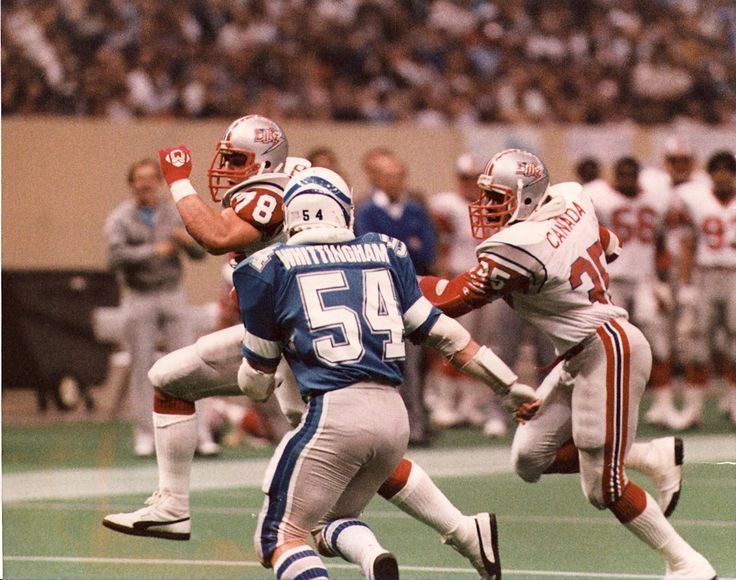
York capitals vs chicago blitz aif championship game
Team history
The Blitz were one of the twelve charter franchises of the USFL. The ownership group was headed by renowned heart surgeon Dr. Ted Diethrich, with legendary coach George Allen and Southern California developer Bill Harris as minority partners. Harris and Allen had originally sought the franchise, but a search for capital led them to Diethrich. Diethrich served as president, with Harris as executive vice president and Allen as chairman of the board and head coach.
George Allen
Allen had been out of coaching since 1977; he had been a candidate for the vacant head coaching position with the Chicago Bears a year earlier, but Bears owner George Halas had never forgiven Allen for defecting to the Rams in 1965. Allen immediately became the "face" of the new team, and set about putting together the best 40-man roster he could find. The result was a team loaded with NFL veterans that was the early favorite to be the new league's first champion.
1983 season
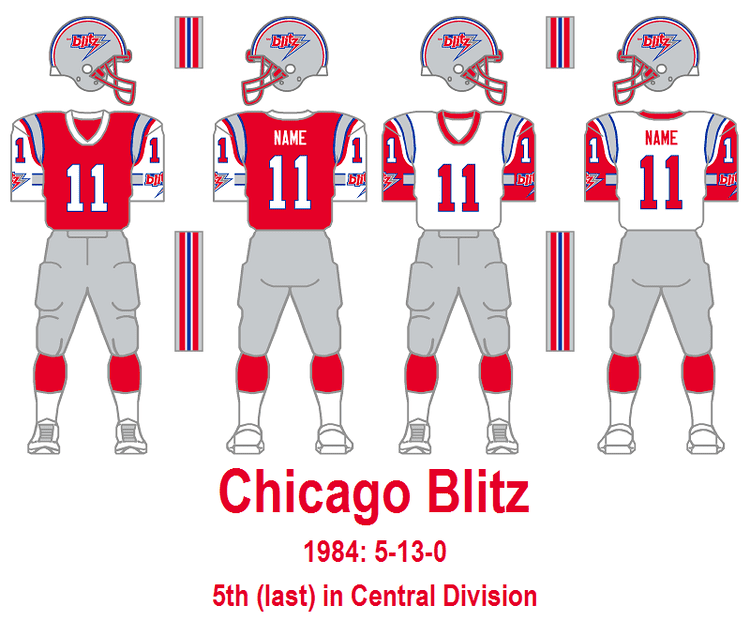
The Blitz finished in a tie for the Central Division title, but were awarded a wild card berth due to a regular season sweep by the eventual champion Michigan Panthers.
In the playoffs, the Blitz blew a 21-point lead over the Philadelphia Stars, losing 44-38 in overtime.
Struggling at the gate
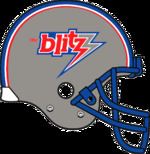
The Blitz was one of the strongest teams in the league. Indeed, some suggested that the Blitz and the two finalists, the Philadelphia Stars and Michigan Panthers, could have been competitive in the NFL. However, they struggled at the gate, averaging only 18,100 fans—a total that looked even smaller in the relatively spacious configuration of Soldier Field. It should be noted that these numbers were very similar to the gates for the Stars and Panthers in their first year. Both of those franchises would see dramatically higher attendance numbers in their second season based on their on-field success in their first year.

Diethrich lost millions of dollars in 1983. Although he, like most of the other owners, knew that he could expect years of losses until the USFL established itself, he soon lost confident in the team's ability to draw fans in Chicago. He also did not feel the losses justified making an investment for a team far from his home in Phoenix (he was the founder of the Arizona Heart Institute). As it turned out, Arizona Wranglers owner Jim Joseph had lost almost as much money as Diethrich, and was looking to sell the Wranglers.
Franchise swap with Arizona Wranglers
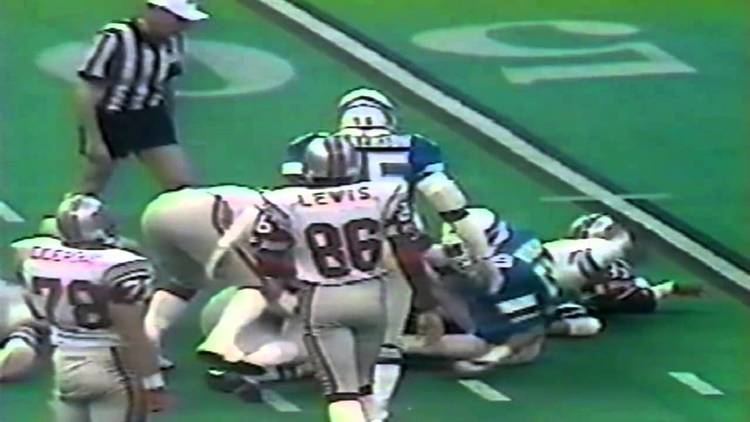
This resulted in one of the most unusual transactions in sports history. Diethrich sold the Blitz to fellow surgeon James Hoffman, then bought the Wranglers from Joseph. Hoffman and Diethrich then engineered a swap of assets in which George Allen, the Blitz coaching staff and most of the Blitz players moved to Phoenix while most of the Wranglers roster moved to Chicago. (The most notable exception was that Wrangler triggerman Alan Risher stayed in Arizona to back up Greg Landry.) The deal allowed Deithrich's coach, Allen, to keep the NFL veteran-loaded Blitz roster that Allen and the Chicago front office painstakingly assembled in 1983.
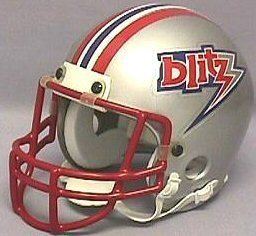
(While the USFL was active, the league considered the 1983 and 1984 Wranglers to be the same franchise, even though almost all the players were different.)
The deal transformed the Wranglers from a cellar-dweller to a powerhouse almost overnight, while turning the Blitz into a lesser version of the 4-14 Wranglers. The transaction raised serious questions about the USFL's credibility—especially in Chicago.
The Hoffman Era
Hoffman spent heavily in promoting the new Blitz. He hired NFL veteran, future Pro Football Hall of Famer and Chicago native Marv Levy as coach. (Levy reportedly thought he would be taking over George Allen's team when he took the job.) Future Hall of Famer Bill Polian was the player personal director for the Blitz in 1984.
Bears backup QB Vince Evans was brought in to be the new Blitz starting quarterback. Evans signed in November 1983 to a 4-year, $5 million deal. He was signed in spite of owning a very unimpressive 57.31 QB rating in seven previous NFL seasons. Evans' accuracy was always an issue in the NFL. His most accurate season up to that point was 1980 when he completed 53.2% of his passes. He entered the USFL with a career NFL competition percentage of 48.7% and a 31-53 TD to INT ratio.
In January 1984, the Blitz tendered an offer that would have been the largest contract in football ($2 million a year for 3 years) to Bears star running back Walter Payton. Payton promised to consider the offer, but would not be rushed. The Blitz 1984 season was scheduled to start on February 27 and the new ownership had little success selling season tickets. The Blitz needed Payton quickly to help sales, so they put a deadline on the offer of 2/9/84. Before he made up his mind, the Blitz withdrew the offer realizing they simply did not have the finances.
With a less talented team and no big names to excite the fans, ticket sales predictably flat-lined, in spite of Hoffman sinking a lot of money into advertising. Fans were not happy that Hoffman had, for all intents and purposes, jettisoned the third-best team in the league in favor of an also-ran. Just prior to the season, a frustrated Hoffman walked away from the Blitz, leaving the team to the minority owners. The Hoffman era ended before his new team had even played a down.
An even weaker Blitz team
Although the 1984 Blitz had many of the same players as the 1983 Wranglers, they were a weaker team due to two reasons.
First, there was the expansion draft and its requirements. All of the initial 12 teams were required to make players available for the expansion teams.
Secondly, Evans was not a capable replacement for Risher, the league's 6th-ranked passer in 1983.
The 1984 Season
The "new" Blitz made a wretched showing on the field, finishing with the third-worst record in the league. The 1983 Wrangler defense gave up a league worst 442 points and the 1984 Blitz were equally as challenged defensively, finishing second to last in the league with 466 points allowed.
Evans was the quarterback many fans expected—a flashy talent with little accuracy or consistency and a penchant for turnovers. For the season, he completed 48.7% of his passes with 14 TDs and 22 INTs for a rating of 58.29. Featured HB Larry Canada was solid, running for 915 yards and 7 TDs and adding 48 catches. WR Marcus Anderson led the team with 50 catches for 940 yards with 5 TDs. All-Pro punter Jeff Gossett led the USFL with a 42.5-yard avg.
The Blitz attracted only 7,500 people per game, the second-lowest average gate in the league. The inability to draw even 10,000 per game would dramatically affect the team's bottom line. Early in the season, the Blitz' minority owners, drowning in red ink, returned the team to the league. The USFL could not simply fold the Blitz, however—its contract with ABC required the league to have teams in the New York City, Los Angeles and Chicago markets (home to ABC's strongest-performing stations).
Shutting down
With 4 games to go, a press conference was held announcing that the Blitz would be shut down. It was also announced that Chicago White Sox minority owner Eddie Einhorn would be granted a new USFL franchise for Chicago. While it was stressed that Einhorn's franchise was not the Blitz, Einhorn retained the rights to all Blitz players and coaching staff—strongly implying the team would play in the 1985 season. ABC had no objections to this move, probably due to the USFL's anemic ratings in Chicago.
A strong proponent of the USFL's planned move to the fall in 1986 (so as not to compete with his own White Sox or their crosstown rivals the Chicago Cubs for fans), Einhorn opted not to field a team in the USFL's final spring lame duck season, 1985. For reasons unknown, the Blitz were also left off the league's proposed fall 1986 schedule, and the Blitz never played football again.
Players who went on to the National Football League
The Blitz had a number of players who had played in the National Football League or would go on to play there. Some of them were Vince Evans, Tim Spencer, Trumaine Johnson, Greg Landry, Jeff Gossett, Vagas Ferguson, Richard Holland, Joe Ehrmann, Tim Wrightman, Larry Canada, Tom Thayer, Frank Minniefield, Jim Fahnhorst, Marc May, Brian Glasgow, Walter Easley, Luther Bradley, Troy Thomas, Robert Cobb, Ed Smith, Stan White, Eddie Brown, Kevin Long, and Mark Keel.
There are currently two coaches in the Pro Football Hall of Fame that coached in the USFL, both coached the Blitz: George Allen (1983) and Marv Levy (1984).
Single season leaders
Rushing Yards: 1157 (1983), Tim Spencer
Receiving Yards: 1327 (1983), Trumaine Johnson
Passing Yards: 2624 (1984), Vince Evans
